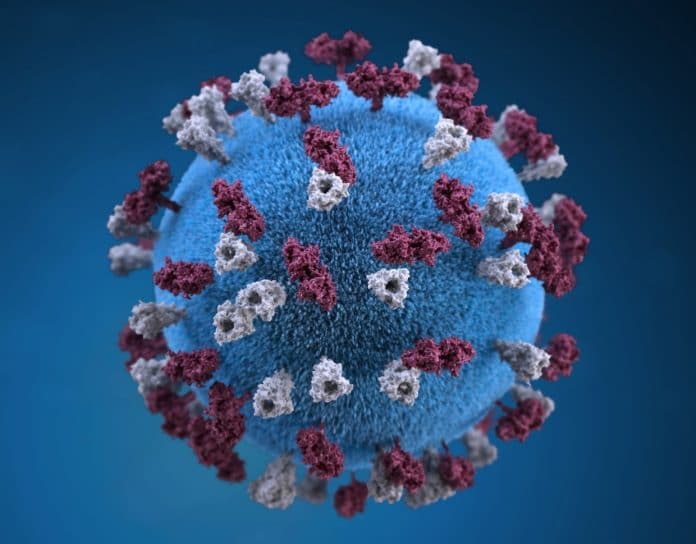As of 20 January 2022
4.3 million
The pandemic is estimated to have reversed earlier gains in poverty reduction. By the end of 2021, COVID-19 had pushed an additional 4.3 million people under the US$5.50 a day poverty line in the WHO European Region.
43%
International research shows that as many as 43% of frontline workers are experiencing significant levels of anxiety, with a prevalence of 27% in nurses and 17% in medical doctors. A further study reported that as many as 40% of clinical staff working in intensive care met the clinical threshold for post-traumatic stress disorder.
123 million
The total number of COVID-19 cases detected in the Region, consisting of 53 Member States, since the onset of the pandemic. That is equivalent to the entire population of France and Italy combined. It is also more than a third of global confirmed cases, currently at 333 million.
1 in 3
Between January and March 2021, 1 in 3 countries in the WHO European Region, reported disrupted care related to non-communicable diseases – the Region’s leading cause of death and disability, through diseases such as cancer, diabetes and asthma. Cancer screening was the most disrupted service. Throughout the pandemic, WHO has conducted national pulse surveys on the continuity of essential health services and the impact of COVID-19. Findings based on data collected in late 2021 are forthcoming and seem to confirm less disruption in 2021 than in 2020.
65%
The percentage of the total population in the Region that have received at least 1 dose of a COVID-19 vaccine; that is 603 445 303 people. The goal is to have vaccinated 70% of the population in every country, across the globe, by mid-2022.
5
Number of COVID-19 variants of concern, detected globally to date: Alpha, Beta, Gamma, Delta and Omicron. For a variant to be defined as a variant of concern, it needs to be associated with one or more of the following changes: an increase in transmissibility or detrimental change in epidemiology; an increase in virulence; a decrease in effectiveness of public health and social measures, vaccines or therapeutics.
63%
As of 10 January 2022, the Institute for Health Metrics and Evaluation (IHME) estimated that nearly 2 in 3 people in the European Region had been infected at least once with COVID-19.
10
The number of COVID-19 vaccines, approved by the WHO for Emergency Use Listing (EUL). WHO EUL is a procedure for assessing unlicensed vaccines, therapeutics and in vitro diagnostics during public health emergencies with the ultimate goal of expediting their availability to people who need them.
2369
The average number of COVID-19 deaths per day since the first cases were detected in the Region, on 24 January 2020. The total number of registered COVID-19 deaths in the Region, is 1 734 427. That is 99 every hour in the past 2 years, based on data from the entire Region.
0.5 million
WHO/Europe and the European Centre for Disease Prevention and Control (ECDC) estimate that COVID-19 vaccines saved the lives of 469 186 people aged 60 years and over in 33 countries in the Region, between December 2020 and November 2021. The estimate does not include lives saved by vaccinating people under 60 nor lives saved from the indirect effect of vaccination because of a reduction in transmission.
13%
The percentage of health workers in the Region that still to this day have not had a single shot of a COVID-19 vaccine.
9.6 billion
The number of vaccine doses administered globally by health-care workers, of which 1.4 billion have been administered in the WHO European Region. The vaccines are doing what they were designed to do: save lives, prevent severe disease and minimize pressure on intensive care units.
24%
Between 2019 and 2020, the rate of newly diagnosed HIV-cases in the Region, dropped by 24%, largely due to reduced testing caused by COVID-19 restrictions and service disruptions. A joint WHO/Europe–ECDC report, published in November 2021, indicated that the number of people in the Region living with undiagnosed HIV is on the rise.
52%
Of 46 surveyed countries globally, 24 (or 52%) identified COVID-19-related constraints as a challenge to implementing national health and climate change plans or strategies, and indicated that the continued burden of the pandemic response may limit national health authorities’ abilities to plan and prepare for climate-related health stresses and shocks.
10–20%
Most people who develop COVID-19 fully recover. Current evidence suggests nonetheless, that approximately 10–20% of people suffer from a post COVID-19 condition or long COVID; experiencing lingering symptoms for weeks to months, following acute COVID-19 infection.

